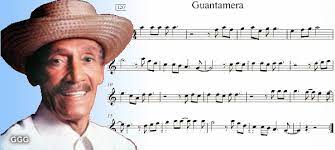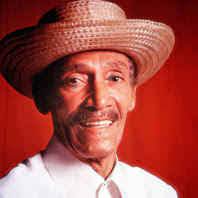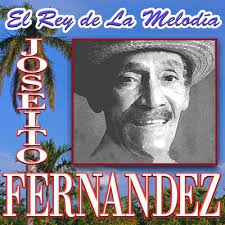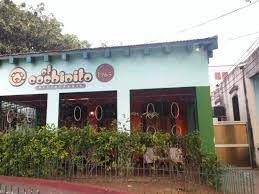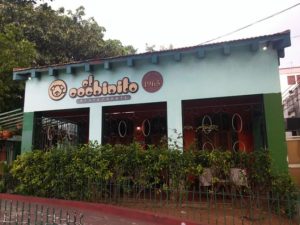THE “JARDINES DE LA TROPICAL”, HAVANA, CUBA, WAS THE PRODUCT OF A PRIVATE SUCCESSFUL NATIONAL ECONOMIC POLICY. PHOTOS..
Perhaps the most effective commercial strategy of the first half of the 1900s on the island of Cuba was the construction of “Los Jardines de La Tropical”, the fruits of an extraordinary Spanish-Cuban industry that stimulated manufacturing development in Cuba with its efforts. and its successful economic policy, for which it achieved great excellence, inside and outside of Cuba, with its products and services, the Cerveceria “La Tropical”.
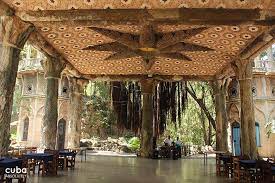
Old “Jardines de la Tropical” constructions
La Tropical has a strategic location, located on the banks of the Almendares River, which is why it used hydraulic energy to start its machinery. This technology was later imitated by Cervecería Internacional and Cuba Cerveza. The quality of the beer produced quickly gained international fame, due in part to the participation of consecrated German and French brewmasters, residents of the Factory.
In 1909, La Tropical absorbed one of the largest North American breweries: Havana Brewery, which owned the Tívoli Beer and Ice Factory. This is how the La Tropical y Tívoli brewery was born, which in 1953 employed more than 820 people, and remained active until 2004.
THE TROPICAL GARDENS ARE BORN
“Los Jardines” were born mainly as a result of commercial strategy, they were created in 1904 together with the Fábrica de Puentes Grandes and hosted private and public events to promote the promotion of beers. It is said that for each ticket purchased for the Gardens, a “Tropical Media” for men and a flower for women were included as a welcome.
Faced with the success of the Gardens, the International Brewery and La Casa Bacardí responded with their own “Social marketing” strategy, establishing respectively “Los Jardines de La Polar” in Havana and “Los Jardines de la Casa Bacardi” in Santiago de Cuba.
The old grounds of “Los Jardines” had in its structure three rooms: “Ensueño”, “El Mamoncillo” and “La Cúpula”, which were supported and ornamented by imposing columns that imitated the shape and texture of tree trunks in one of the first and greatest manifestations of the use of cement, produced by the first cement factory in Cuba and Latin America. One of the main ballrooms was built around a mamoncillo tree. Railings, gazebos, beer bars, benches, and lounges all reproduce shapes and textures imitating the nature of the landscape.
Faced with a panorama where public initiatives failed to develop urban and architectural projects such as parks, public gardens, or centers for outdoor enjoyment, like the current times in Cuba due to the public inability of their national governments, “Los Jardines” constituted a private initiative that provided the city with an outdoor space for public enjoyment, unique within the Capital. In addition, they were the first in Cuba to recreate the modernist style – for both architecture and landscaping – inspired by Spanish organic gardens, in complete harmony with local nature.
Above the Gardens stands El Castillo, built-in 1911, designed by Jaime Crunyas who also designed the Church of San Francisco, the Church of the Sacred Heart of Jesus, and the Hermitage of Montserrat.
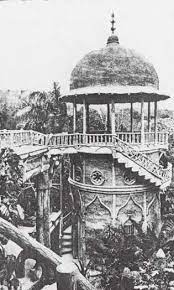
Made in the Neo-Arab style, with its beautiful mosaics, its carved wooden niches, and its horseshoe arches that reflect the Nasrid style, El Castillo had its sources of inspiration in the greatest architectural works of the last period of Muslim domination in the Spanish peninsula. (1230-1492): the Great Alhambra. In addition, on its ceilings, there are beautiful white and yellow granite flowers that recall the designs of the Mosque of Córdoba.
In fact, the Gardens were defined as “one of the main attractions that Havana offered and where parties and Sunday tours were held with an average attendance of more than a thousand people.”
In its first stage, Los Jardines offered music more focused on Spanish folk roots such as pasodobles, charlestón, fox-trot, etc. Later they were flooded by the danzones of Antonio María Romeu, Arcaño and his Maravillas, Belisario López and by orchestras, such as Fajardo and his Estrellas, La Orquesta Aragón and La Sonora Matancera. Most of the musicians and groups mentioned above had an extraordinary social relevance within the musical and dance scene of the time, which shows the cultural aspect that developed in this space.
The exquisiteness of its designs and the quality with which they were made place it alongside the great exponents of international modernist landscape architecture. This was possible thanks to the ingenuity of their master builders, who with such work raised their good work, thereby refuting the attitudes of those who rejected them ”. In this way, they were intensely enjoyed by the Havana, Cuban, and world society, since the visit to the Jardines de La Tropical became a mandatory itinerary for any tourist, likewise, the guides and commercial directories of the moment echoed their beauty and the prestige of its industry.
In its outer fountain, the water gushed out, in its original times, in addition to being completed with an eclectic façade, which rather reminds us of a medieval castle.
NATIONALIZATION OF THE TROPICAL GARDENS (1960)
The Jardines de La Tropical was nationalized on October 13, 1960, by virtue of Law No. 890, as part of the properties of the New Ice Factory. Under the new management, the Stadium Tropical Room was closed and Los Jardines continued to carry out activities until 1968, when they were closed together with other establishments in the country that were dedicated to the consumption of alcoholic beverages.
From this moment on, Los Jardines underwent several structural and functional modifications, with the aim of erasing the memory of a space seen as the insignia of a social class opposed to revolutionary interests. These modifications included: the removal and subsequent casting of the monumental sculptures of Ramón Manuel Herrera Gutiérrez, Cosme Blanco Herrera, and Francisco Gelats y Durall.
The lack of maintenance caused the loss of a good number of built elements, including ferrocement seats and gazebos, the domes of the Ensueño Hall, the wooden clock that marked the closing time of the gardens, and its beautiful base fountain. hexagonal.
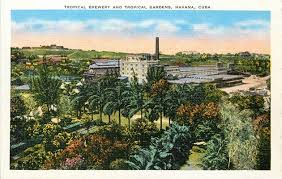
The apex of the Castle’s degradation was the construction of a Creole food restaurant, inaugurated, without responding to any logic, under the name of Madrid, which operated until 2000. This construction caused the removal of the Castle’s furniture, the lights original, and the interior of the building was architecturally transformed to enable an industrial kitchen and bathrooms on its upper floor. Many of the impeccably manufactured tiles from Spain were replaced by “made in China” tiles.
During the 90s of the last century, this park had a repair and the castle was adapted to a restaurant, but later, economic difficulties made it forgotten.
Despite this peculiarity of time and the lack of love of many humans for nature, even The Gardens retain a very special raw charm that can well be exploited.
In its heydays – it still retains many details – the complex had caves, labyrinths, waterfalls, gazebos, cafeterias, and a spacious ballroom with a capacity for 500 couples.
The place is accessed by Avenida 51, in the Marianao neighborhood, near an area called Puentes Grandes. Also, and not to be confused, there is El Salón Rosado de La Tropical, which is a space for dancers, as it always was, on Avenida 41. Now they are part of the Metropolitan Park of Havana.
Meanwhile, it has many values, an undeniable beauty, the intimacy of these places, and the possibility of allowing professional or amateur photographers to portray nature and enjoy structures intelligently integrated into the landscape, of what were once “The Gardens. of the Tropical “.
Throughout its history, Los Jardines de la Tropical – and its magical Castle – have demonstrated their importance as an essential cultural, recreational and commercial facility in the middle of Havana. In addition, it had the great merit of introducing European landscape and modernist currents in Cuba, promoting the use of cement in the development of modern architecture.

RECOMIENDENOS A SUS AMISTADES * PREFIERA A NUESTROS SPONSORS.

LOS “JARDINES DE LA TROPICAL”, LA HABANA, CUBA, FUE EL PRODUCTO DE UNA ACERTADA POLITICA ECONOMICA PRIVADA. PHOTOS. .
Quizás la estrategia comercial más efectiva de la primera mitad de los años 1900s en la isla de Cuba, fue la construcción de “Los Jardines de La Tropical”, frutos de una extraordinaria industria hispano-cubana que estimuló el desarrollo fabril en Cuba con su empeño y su acertada política económica, por lo cual alcanzó gran excelencia, dentro y fuera de Cuba, con sus productos y servicios, la Cerveceria “La Tropical”. .
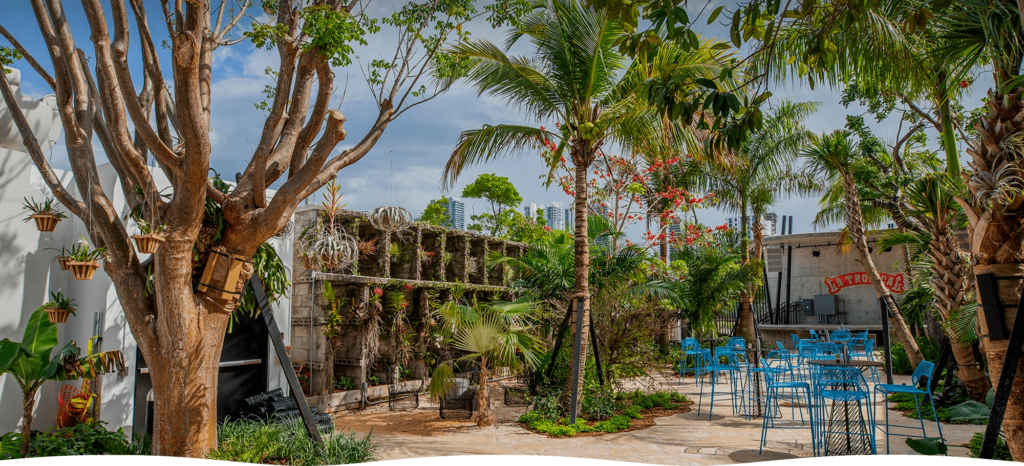
La Tropical posee una ubicación estratégica, situada a orillas del Rio Almendares, por lo cual utilizaba energía hidráulica para echar a andar sus maquinarias. Dicha tecnología fue imitada posteriormente por la Cervecería Internacional y Cuba Cerveza. La calidad de la cerveza producida adquirió rápidamente a una fama internacional, debido en parte a la participación deconsagrados maestros cerveceros alemanes y franceses, residentes en la Fábrica.
En 1909, La Tropical absorbió a una de las más grandes fábricas cerveceras norteamericanas: la Havana Brewery, la cuál era propietaria de la Fábrica de Cerveza y Hielo Tívoli. Nace así la cervecería La Tropical y Tívoli que llegó a emplear en 1953 a más de 820 personas, y se mantuvo activa hasta el año 2004.
NACEN LOS JARDINES DE LA TROPICAL
“Los Jardines” nacieron principalmente como fruto de la estrategia comercial, fueron creados en 1904 junto a la Fábrica de Puentes Grandes y acogieron eventos privados y públicos para favorecer la promoción de las cervezas. Se dice que por cada entrada comprada para los Jardines se incluía, a modo de bienvenida, una “Media Tropical” para los hombres y una flor para las mujeres.
Ante el éxito de los Jardines, la Cervecería Internacional y La Casa Bacardí respondieron con su propia estrategia de “Social marketing”, estableciendo respectivamente “Los Jardines de La Polar” en La Habana y “Los Jardines de la Casa Bacardí” en Santiago de Cuba.
Los antiguos terrenos de “Los Jardines” poseian en su estructura tres salones: “Ensueño”, “El Mamoncillo” y “La Cúpula”, los cuales estában sostenidos y ornamentados por imponentes columnas que imitaban la forma y la textura de troncos de árboles en una de las primeras y máximas manifestaciones de la utilización del cemento, producido por la primera fábrica de cemento en Cuba e Iberoamérica. Uno de los principales salones de baile fue construido alrededor de un árbol de mamoncillo. Barandas, cenadores, barras de cerveza, bancos y salones reproducen a su vez formas y texturas imitando la naturaleza del paisaje.

Ante un panorama donde las iniciativas públicas no lograron desarrollar proyectos urbanísticos y arquitectónicos como parques, jardines públicos o centros para el disfrute en exteriores, al igual que los actuales tiempos que corren en Cuba por la incapacidad publica de sus gobiernos nacionales, “Los Jardines” constituyeron una iniciativa privada que proporcionaba a la ciudad un espacio exterior de disfrute público, único dentro de la Capital. Además, fueron los primeros en Cuba en recrear el estilo modernista – tanto para la arquitectura como para el paisajismo – inspirado por los jardines orgánicos españoles, en completa armonía con la naturaleza local.
Arriba de los Jardines se alza El Castillo, construido en el año 1911, diseñado por Jaime Crunyas quien también diseñó la Iglesia de San Francisco, la Iglesia del Sagrado corazón de Jesús y la Ermita de Montserrat.
Realizado en estilo Neo-Árabe, con sus hermosos mosaicos, sus nichos de madera labrada y sus arcos de herradura que reflejen estilo Nazarí, El Castillo tuvo sus fuentes de inspiración en las más grandes obras arquitectónicas del último periodo de dominación musulmana en la península española (1230-1492): el Gran Alhambra. Además, en sus techos lucen hermosas flores de granito blanco y amarillo que recuerdan los diseños de la Mezquita de Córdoba.
De hecho, los Jardines fueron definidos como “uno delos principales atractivos que ofrecía La Habana y donde se celebraban fiestas y giras dominicales con un promedio de concurrencia de más de mil personas”.
En su primera etapa, Los Jardines ofrecían una musica más enfocada en las raíces folklóricas españolas como los pasodobles, charlestón, fox-trot etc. Posteriormente fueron inundados por los danzones de Antonio María Romeu, Arcaño y sus Maravillas, Belisario López y por orquestas, como la de Fajardo y sus Estrellas, La Orquesta Aragón y La Sonora Matancera. La mayoría de los músicos y agrupaciones mencionadas anteriormente poseían una extraordinaria relevancia social dentro del ambito musical y bailable de la época, lo cual muestra la vertiente cultural que se desarrolló en este espacio.
La exquisitez de sus diseños y la calidad con que fueron realizados lo sitúan junto a los grandes exponentes de la arquitectura paisajista modernista internacional. Lo que fue posible gracias al ingenio de sus maestros de obras, que con tal obra pusieron en alza su buen oficio, rebatiendo con ello las actitudes de quienes los rechazaron”. De esa manera, fueron intensamente disfrutados por la sociedad habanera, cubana, y del mundo, pues la visita a los Jardines de La Tropical se convirtió en itinerario obligado para cualquier turista, igualmente, las guías y directorios comerciales del momento se hicieron eco de su belleza y del prestigio de su industria.
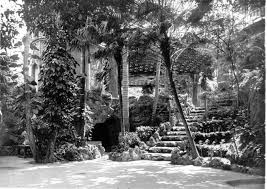
En su fuente exterior el agua brotaba, en sus tiempos originales, además de completarse con una ecléctica fachada, que más bien nos rememora un castillo medieval.
NACIONALIZACIÓN DE LOS JARDINES DE LA TROPICAL (1960)
Los Jardines de La Tropical fueron nacionalizados, el 13 de octubre de 1960, en virtud de la Ley no 890, como parte de las propiedades de la Nueva Fábrica de Hielo. Bajo la nueva dirección, el Salón Stadium Tropical, fue clausurado y Los Jardines se mantuvieron efectuando actividades hasta el año 1968, cuando fueron cerrados junto a otros establecimientos del país que se dedicaban al consumo de bebidas alcohólicas.
Apartir de este momento, Los Jardines sufrieron varias modificaciones estructurales y funcionales, con el objetivo de borrar la memoria de un espacio visto como insignia de una clase social opuesta a los intereses revolucionarios. Estas odificaciones incluyeron: la retirada y posterior fundición de las esculturas monumentales de Ramón Manuel Herrera Gutiérrez, Cosme Blanco Herrera y Francisco Gelats y Durall.
La falta de mantenimiento causó la pérdida de un buen número de elementos construidos entre los que se cuentan asientos y cenadores de ferrocemento, las cúpulas del Salón Ensueño, el reloj de madera que marcaba la hora de cierre de los jardines y su hermosa fuente de base hexagonal.
Ápice de la degradación del Castillo fue la construcción de un restaurante de comida criolla, inaugurado, sin responder a lógica alguna, bajo el nombre de Madrid, el cual funcionó hasta el año 2000. Esta construcción causó la eliminación del mobiliario del Castillo, las luminarias originales, y se transformó arquitectónicamente el interior del inmueble para habilitar en su piso superior una cocina industrial y baños. Muchas de las losas de impecable manufactura provenientes de España fueron reemplazadas por losas “hechas en China”.
Durante los años 90 del pasado siglo tuvo este parque una reparación y el castillo se adaptó a restaurante, pero luego, las dificultades económicas hicieron el olvido.
Pese a esta peculiaridad del tiempo y el desamor de muchos humanos por la naturaleza, aun Los Jardines conservan un encanto en bruto muy especial que bien puede aprovecharse.
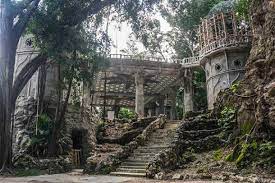
En sus buenos tiempos -aun conserva muchos detalles-, el conjunto poseía grutas, laberintos, saltos de agua, cenadores, cafeterías y un espacioso salón de baile con capacidad para 500 parejas.
Al lugar se accede por la Avenida 51, de barrio de Marianao, cerca de una zona llamada Puentes Grandes. También, y no se debe confundir, existe El Salón Rosado de La Tropical, que es un espacio para bailadores, como siempre lo fue, por la Avenida 41. Ahora forman parte del Parque Metropolitano de La Habana.
Mientras tanto, tiene muchos valores, una belleza indiscutible, la intimidad propia de estos lugares y la posibilidad de permitir a fotógrafos profesionales o aficionados retratar la naturaleza y disfrutar estructuras integradas de manera inteligente al paisaje, de lo que en un tiempo fueron “Los Jardines de la Tropical”.
A lo largo de su historia, Los Jardines de la Tropical — y su mágico Castillo — han demostrado su importancia como instalación cultural, recreativa y comercial imprescindible, en medio de La Habana. Además, tuvo el gran mérito de introducir en Cuba las corrientes paisajistas y modernistas europeas, fomentando el uso del cemento en el desarrollo de la arquitectura moderna.
Agencies/ Quinta Esencia/ Campos/ Rodriguez/ Excerpts/ Extractos/ Internet Photos/ Arnoldo Varona/ www.TheCubanHistory.com
THE CUBAN HISTORY, HOLLYWOOD.

RECOMIENDENOS A SUS AMISTADES * PREFIERA A NUESTROS SPONSORS.

 VIDEOS- Joseito Fernández Sings..
VIDEOS- Joseito Fernández Sings.. VIDEOS- Joseito Fernández “La Guantanamera”..
VIDEOS- Joseito Fernández “La Guantanamera”.. VIDEOS- Joseito Fernández canta…
VIDEOS- Joseito Fernández canta…


